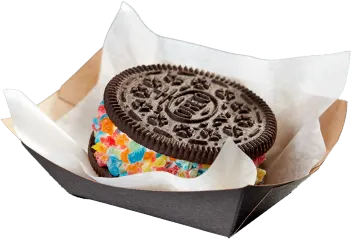December 10, 2020
It’s Personal: How to Deliver Rewards That Resonate
Operators tailor incentives to provide customized experiences for their guests
Rewards Drive Desired Behaviors
Restaurants can use rewards to incentivize a range of desired consumer behaviors, including simply signing up for loyalty programs, referring others to join, spending certain amounts or making specific purchases.
Increasingly, rewards are being tailored to each individual’s preferences based on their purchase history. Many programs are built to be flexible, allowing customers to choose from multiple rewards or empowering operators to provide a monetary discount on anything the customer orders.
Looking for more rewards program inspiration? Learn how White Castle, Taco Bell and Papa John’s inspired loyalty—and boosted their profitability—through discounts and other perks.
The foodservice industry’s widespread adoption of digital ordering has paved a path to more personalized loyalty programs.
“We are seeing a shift to a more digital-first strategy in the restaurant industry,” says Richard Jones, chief marketing officer at Cheetah Digital. “Restaurants that are seeing success have transformed their business models and are focused on building out apps and experiences to allow for more fluid interactions, including delivery, pickup and even contactless payments.”
Successful operators, Jones continues, keep the customer experience at the center of their rewards programs, using customer data to create better reward experiences that are personalized based on past purchase patterns.
“Brands should focus on building emotional loyalty,” he says. “They should focus on providing a value exchange that extends beyond the purchase and is achieved by combining traditional points and rewards programs with a wide variety of engaging, personalized experiences, status achievement, and recognition to make customers feel known and appreciated.”
Most of the largest restaurant operators have rolled out some form of digital rewards that are accessed through the brand’s mobile app. McDonald’s, for example, has its McCafé Rewards program, through which customers earn a free beverage after purchasing five at the regular price. Burger King, meanwhile, promises exclusive offers for customers who use its app, and Dunkin’ allows customers to earn free drinks and receive exclusive offers through its DD Perks mobile app rewards program.
Rewards for Feedback
One of the ways brands can use rewards is by offering incentives to consumers to encourage survey responses. These rewards can be available in a variety of forms, such as monetary incentives or coupons for free or discounted menu items.
Other ideas for structuring incentives, as suggested by marketing automation software supplier HubSpot, include:
Providing temporary access to loyalty program benefits, which offers the added potential benefit of driving increased program participation. Offering to make donations to a charity in exchange for completing a survey. Several foodservice operators have made or encouraged donations to first responders during the pandemic, including Dunkin’ with its Dunkin’ Heroes Campaign, Dos Toros with its Feed the Frontline initiative Feed the Frontline initiative, and Red Lobster and other local seafood restaurants with the Seafood for Heroes meal drive. Entering survey respondents in a sweepstakes for one or more large prizes that are attractive to the restaurant’s customer base and reflect the brand. A wine bar/restaurant might offer a vineyard tour package, for example. Partnering with other organizations or businesses that share the same customer base. Each business or organization would agree to offer a discount at the other in exchange for providing feedback. “This is a great way to show customers that you understand and align with their personal interests,” HubSpot advises.
Keep It Small
According to online survey generator SurveyGizmo, a low-value incentive is generally considered better than a high-value incentive because it’s less likely to attract respondents who are only interested in the reward (thus potentially skewing results). “People are more likely to take a survey if they believe their input will affect change and have a positive impact on something they care about,” SurveyGizmo says. “If your survey is for a higher cause, is short or is a follow-up to a transaction, you probably don’t need to use an incentive.”
A lengthy survey, or one in which respondents don’t have an emotional connection to the brand, is more likely to require an incentive to generate an adequate response rate.
Personalizing Loyalty Incentives
Restaurant operators have found that allowing customers to choose their own loyalty program rewards—and customizing rewards based on purchasing history—are effective ways to make the loyalty reward experience more meaningful.
The My Chili’s Rewards program, for example, tailors rewards to each guest’s behavior and interests. “Do you order dessert a lot? You’ll get a free reward,” says Justice Henderson, a spokeswoman for the chain. “Do we always see a kid’s meal on your check? You’ll get a free kid’s meal.”
During the pandemic, Chili’s customers who have been ordering more food for off-premises dining might be offered free delivery to incentivize future purchases.
My Chili’s Rewards members are generally offered items at the category level—a free dessert or appetizer of their choosing. All members of the My Chili’s Rewards program also get to choose between free chips and salsa or a free non-alcoholic beverage on every visit.
“That’s what’s so great about personalized rewards,” Henderson says. “What may be your favorite isn’t mine, and vice versa.”
Data Is Key
Cheetah Digital’s Jones believes data collection and organization are essential to effective rewards personalization. “Once customer preferences are collected, organizations can deliver relevant offers to surprise and delight customers,” he explains. “For example, if a customer purchases a side of chips every third visit, an offer for free chips wouldn’t go unnoticed. This all starts with a value exchange: The customer is keenly aware that they’ll be rewarded with personalized relevant offers.”
Using snacks and desserts as a reward for reaching certain spending levels can be an “extremely effective” strategy, Jones says.
“Brands can create experiences for their customers to understand their snack and dessert preferences, and then use that data as a surprise-and-delight tactic, rewarding customers with a surprise treat,” he continues. “Once you understand what the consumer likes, you can incentivize future purchases across the menu—and even use these products as a value exchange for providing information on the customer’s preferences.”
Mondelēz International Foodservice specializes in snacks and desserts. Find pointers for incorporating these tasty treats into your rewards program here.
Stay Top of Mind With Operators
Read about 6 Trends Changing and Challenging the Foodservice Status Quo in 2022. Read Article
Recent Posts
All in Good Time: What Makes for a Winning LTO in 2021?
Chefs Cook Up the Future of Fast Casual Restaurant Operations
Chocolate 2.0: The Future of Chocolate Snacks & Desserts
Delivery-Only Restaurants Steer Foodservice in New Direction
Posts by Topic

Join our email list and be the first to know when we drop new articles, trends and insights with updates delivered directly to your inbox.




